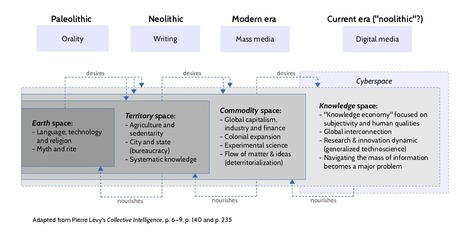Via Cíntia Rabello
Get Started for FREE
Sign up with Facebook Sign up with X
I don't have a Facebook or a X account

 Your new post is loading... Your new post is loading...
 Your new post is loading... Your new post is loading...

luiy's curator insight,
May 27, 2013 11:47 AM
This paper surveys the emerging science of how to design a “COllective INtelligence” (COIN). A COIN is a large multi-agent system where:
In contrast, we wish to solve the COIN design problem implicitly, via the “adaptive”character of the RL algorithms of each of the agents. This approach introduces anentirely new, profound design problem:
Assuming the RL algorithms are able toachieve high rewards, what reward functions for the individual agents will, whenpursued by those agents, result in high world utility? In other words, what reward functions will best ensure that we do not have phenomena like the tragedy of thecommons, Braess’s paradox, or the liquidity trap?
|

Miguel Angel Perez Alvarez's curator insight,
January 14, 2014 2:14 PM
Inteligencia colectiva, evolución 
Deb Nystrom, REVELN's curator insight,
January 31, 2014 11:18 PM
Cyberspace big thoughts, and perhaps indicating a fusion or an evolution of knowledge management in a group space. |











Great one.
Inteligencia colectiva, evolución
Cyberspace big thoughts, and perhaps indicating a fusion or an evolution of knowledge management in a group space.